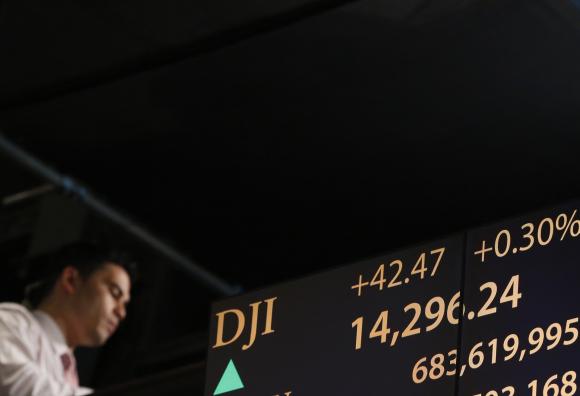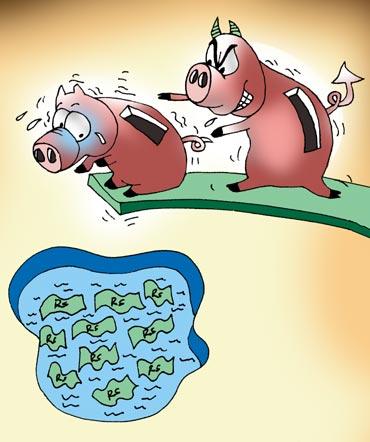 | « Back to article | Print this article |
Dow hits record HIGH! Should YOU be WORRIED?
One of the world's most-watched index reached a record high yesterday. Here are some key takeaways for investors.
The Dow Jones Industrial Average, the bluechip index of the United States, yesterday closed at 14,253 points, after hitting an intra-day record high of 14,320.65, eclipsing its previous peak of 14,163 reached on October 9, 2007.
While several other key indexes in the US and around the world are yet to scale peaks scaled just before the onset of the global financial crisis of 2008, now is the right time to step aside and consider what such market peaks should mean for investors.
Dow hits record HIGH! Should YOU be WORRIED?
Meet highs with caution not excitement
Investors worldwide have a knack of trying to time the market and most get it wrong and enter the most inopportune time: just near peaks after stocks have posted multi-year gains. In recent memory, inflows into equity worldwide were at highest in 2007 just as the market kept scaling newer highs and was about to drop.
Conventional investing wisdom, however, suggests that investors should pick up stocks at the peak of pessimism and become cautious when values start looking stretched.
The contrarian Warren Buffett's inspiring 'Be greedy when others are fearful and fearful when others are greedy' quote clearly captures this. Another of Buffett's gem: 'Only those who will be sellers of equities in the near future should be happy at seeing stocks rise. Prospective purchasers should much prefer sinking prices'.
Dow hits record HIGH! Should YOU be WORRIED?
Greater the euphoria, greater the noise
Thanks to behavioural quirks, market peaks are generally associated with a degree of euphoria. While such euphoria may be absent to a large extent this time, thanks to a general sense of disillusionment with recent stock returns and the fact that the market has only regained a level it had reached six years ago, it is worthwhile to note that the greater the headiness, the greater will be the noise associated with it, which may make you more susceptible to taking irrational decisions.
So if and when you come across a record-setting market with pundits busy predicting the next 'target' and investors pouring money into stocks hand over fist, it should be enough to ring a warning bell.
Dow hits record HIGH! Should YOU be WORRIED?
Valuation matters: Not all highs are alike
Closer in India, the Indian Sensex has crossed the 20,000 level thrice in recent years, once in early 2008, then in late 2010 and yet again in early January this year.
While the Indian market is yet to create a fresh sustainable high it made since 2008, it must be remembered that valuations during each of the three occasions were different with earnings being significantly higher each time: the trailing price-to-earnings ratio for the Sensex stood at 28.51 and 23.59 in 2008 and 2010, respectively; it was a relatively-somber 18.10 (closer to long-term averages) this year.
It implies that you should invest strictly based on when you are confident about valuations being attractive and not when the experts on TV or the column in the magazine asks you to.
Dow hits record HIGH! Should YOU be WORRIED?
There's money to be made in flat markets, too
While it's a far-from-reassuring fact the headline indexes have not gone anywhere in over five years now, either in India or in the US, it must be noted that several funds that stuck to the basics of investment -- buying companies trading at discounts to their intrinsic worth -- have shown decent returns.
In the US, the reason that the Dow Jones took out its high earlier than the S&P 500 (which is still shy of the record high) is that it does not have any weightage in financial stocks, which were the most overvalued near the market peak and their performance has since lagged other sectors.
So bull markets or sideways markets, sticking to the basics should hold you in good stead.





